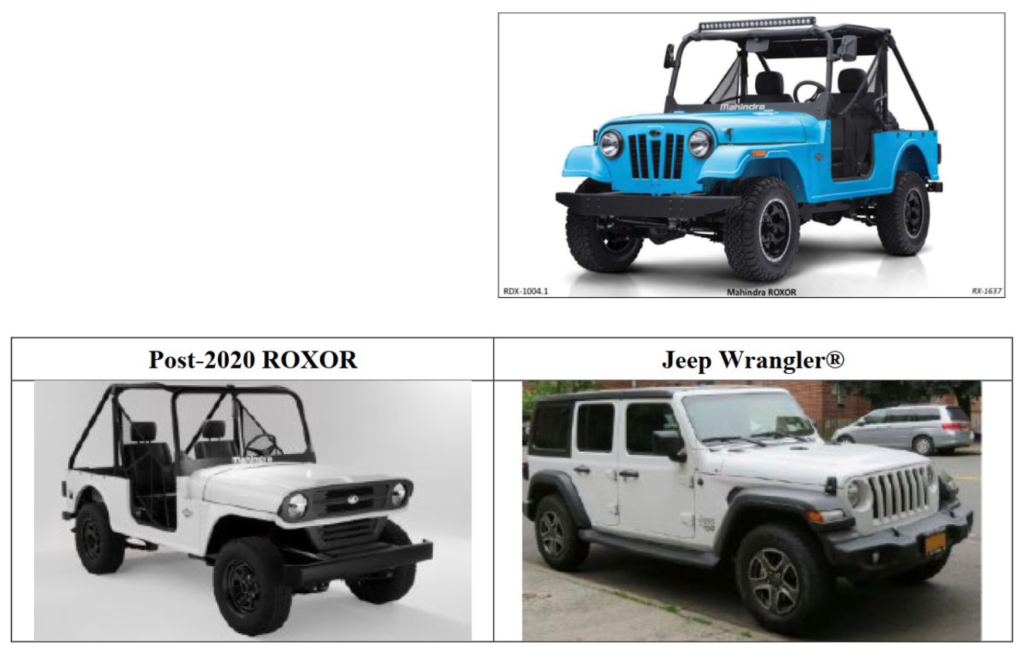On remand from the Sixth Circuit, the Eastern District of Michigan (“District Court”) declined FCA US LLC’s (“Jeep”) motion to enjoin importation of rival automaker Mahindra’s post-2020 ROXOR utility terrain vehicle (“UTV”). The Sixth Circuit had reversed the District Court for failing to analyze the factors for applying the “safe distance rule.” On remand, the District Court held that even if the original infringement was willful, redesigning the product in good faith militates against applying the rule.
Jeep filed an International Trade Commission (ITC) action alleging the 2018-2019 ROXOR infringed Jeep’s trade dress, which covers six aspects of certain Jeep Wrangler models’ appearance. Mahindra filed a parallel District Court lawsuit seeking declaratory judgment of non-infringement. The ITC found the 2018-2019 ROXOR, which evoked the look of the Willys/Jeep CJ that Mahindra had been licensed to build and sell abroad since 1947, infringed Jeep’s trade dress and barred Mahindra from importing or selling it in the U.S. Mahindra redesigned the ROXOR to avoid Jeep’s trade dress. It sought and, over Jeep’s opposition, obtained a modification of the ITC exclusion order to allow importation and sale of the post-2020 ROXOR in the U.S.
Having lost before the ITC, Jeep sought an injunction against the post-2020 ROXOR in the co-pending District Court action on the basis that the redesigned vehicle still infringed, at least under the “safe distance rule.” That rule, if it applied, would have required Mahindra to change their trade dress to one so far removed from the Jeep trade dress they had infringed so as to put the public on notice that the two are not related. The rule is intended to prevent infringers from capitalizing on lingering confusion from their past infringement. The ITC had found the rule inapplicable based on lack of likelihood of consumer confusion. The District Court relied on the ITC’s determination to also reject Jeep’s request, but the Sixth Circuit reversed on the basis that the District Court had failed to consider the other factors relevant to whether the rule should apply: whether Mahindra’s infringement was abusive or in bad faith.
On remand, the District Court again found the safe distance rule inapplicable. Notably, the Court found that even though the original infringement was in bad faith, that was offset by the fact that the redesign was non-abusive (of Jeep’s goodwill) and in good faith. The District Court further found no likelihood of lingering confusion because the redesigned product was “drastically different” than Jeep’s trade dress.
This case illustrated two different conceptions of the safe distance rule: Jeep’s, where the infringer’s initial willfulness was incurable and would trap them out of the market even with an otherwise non-infringing product; and Mahindra’s, where a willful infringer could escape the yoke of past infringement via good faith redesign. The District Court deemed Mahindra and its Not-a-JeepTM UTV deserving of redemption.

